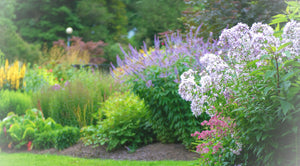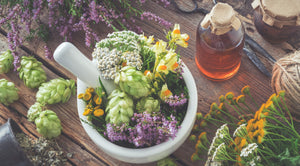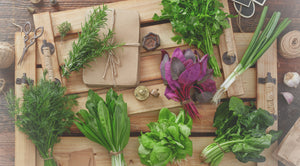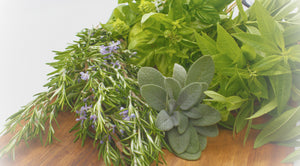We Know How to Grow Herb Plants, Share our Knowledge!
 If you have spent over 20 years growing plants, chances are you've grown a lot of different types. At The Growers Exchange, we started with flowering annuals. We filled our greenhouses with geraniums of all colors - it was what the market demanded. There were no "Proven Winners", no large corporate growers supplying the wide variety that has become so common. So, geraniums were the beginning. However, our little garden center served an educated community of gardeners, and they wanted more. We wanted more.
If you have spent over 20 years growing plants, chances are you've grown a lot of different types. At The Growers Exchange, we started with flowering annuals. We filled our greenhouses with geraniums of all colors - it was what the market demanded. There were no "Proven Winners", no large corporate growers supplying the wide variety that has become so common. So, geraniums were the beginning. However, our little garden center served an educated community of gardeners, and they wanted more. We wanted more.We began looking into herb plants, and began by taking a lot of cuttings. There were not many herb suppliers. We bought seeds from seed companies on the West Coast. Momentum grew. Herb plants became more and more popular and we kept growing. We added culinary herbs, medicinal herbs and aromatic herbs. We now grow over a hundred varieties and keep adding more. Over the years we have added perennials and flowering bulbs. We now grow vegetables and small fruits.
But, herbs remain our most favorite plants to grow. We are always adding new varieties.
Easy to Grow Herb Plants
Herb plants are easy to grow, easy to cultivate and have so many uses for the gardener. They do well anywhere. When grown in pots, they will provide an herb garden all year long. The long, cold days of winter can be improved with a collection of potted herbs in a sunny window. They are valued for their uses in cooking, in medicine, as a wonderful garden plant and their aroma.Herb plants, unless noted shade lovers, require at least 6-8 hours of direct sunlight in order to grow well. All day sun is even better. The more intense the light, the more the oils will develop within the glands of foliage and stems, creating stronger fragrances and seasonings. A southern or western exposure will meet the needs of most herbs, although some may do well in a very bright east-facing location. Indoors, it is crucial to give herbs the best light available.
Growing Herbs Indoors and Outside
 Outdoors, container-grown herbs dry faster than those in beds, so must be watered more frequently.
Outdoors, container-grown herbs dry faster than those in beds, so must be watered more frequently. Indoors, water thoroughly when the soil feels dry a half inch or so below the surface, depending on pot size. Never allow the plants to wilt between watering, but avoid constant soggy soil conditions. Constantly wet soil encourages root rots which are the most common problem of herbs grown indoors, especially during dark winter months.
Fertilize sparingly; herbs are not heavy feeders.
Harvesting Herb Plants
Culinary herbs may be harvested throughout the growing season by snipping sprigs and leaves as they are needed. Many will contain the best flavor if harvested just before the flowers are beginning to open. By making the cut a few inches down the stem and just above a set of leaves, new growth will constantly be encouraged and a bushier plant will result. This is especially important with the annual herbs such as basil, which would otherwise become quite woody and less productive if it were left to go to seed.The time of day you harvest is very important. Mid-morning hours are best, as this is when oil content is highest. This is usually just after the dew has dried and before the heat of the day begins.
Once picked, herbs should be gathered quickly and kept out of bright light. Washing the herbs is not required but may be necessary if there is a lot of dirt or debris on the foliage. If this is the case, wash the herbs gently with warm water and pat them dry or use a hair dryer on a low setting. Otherwise, excess water will slow the drying process.





